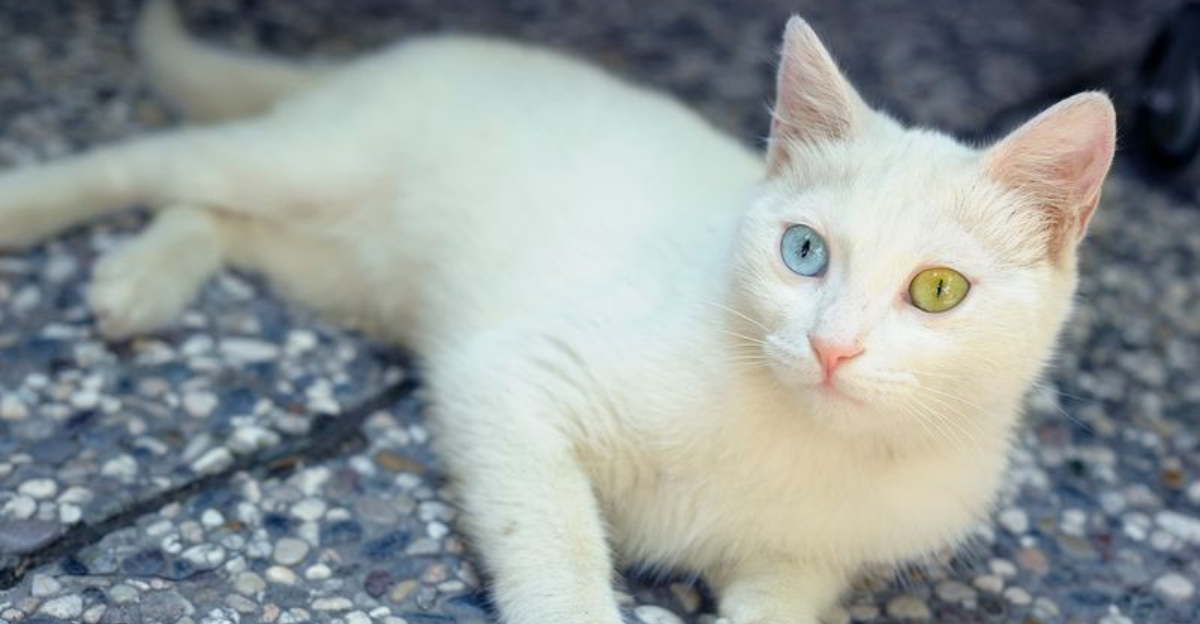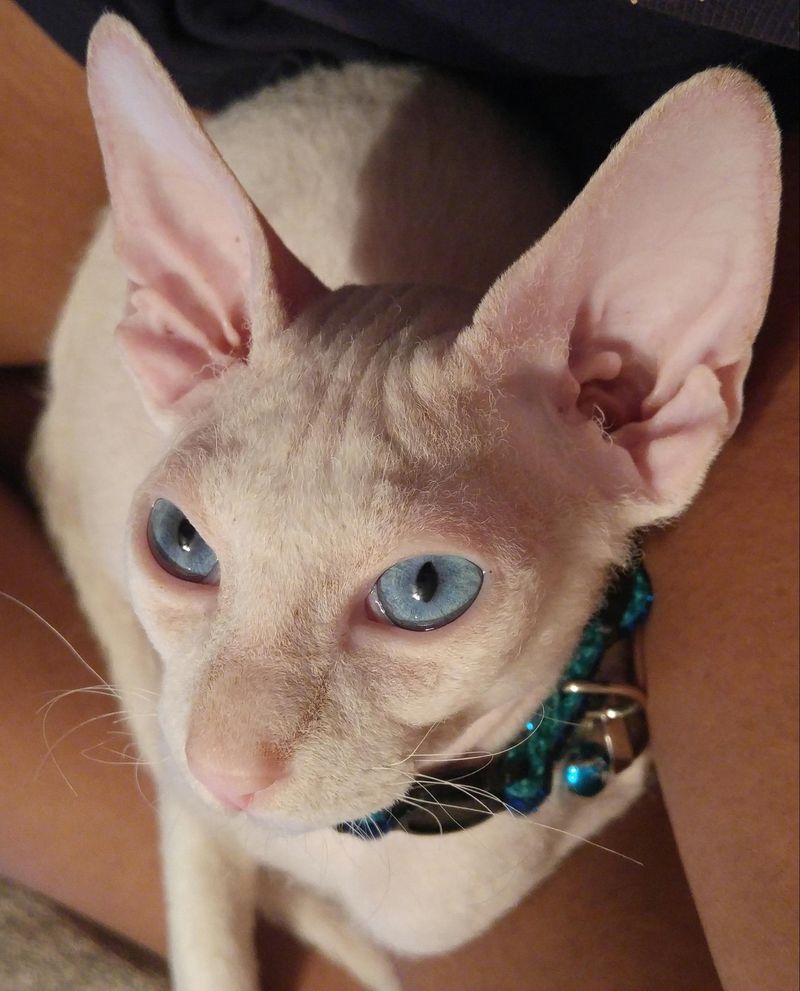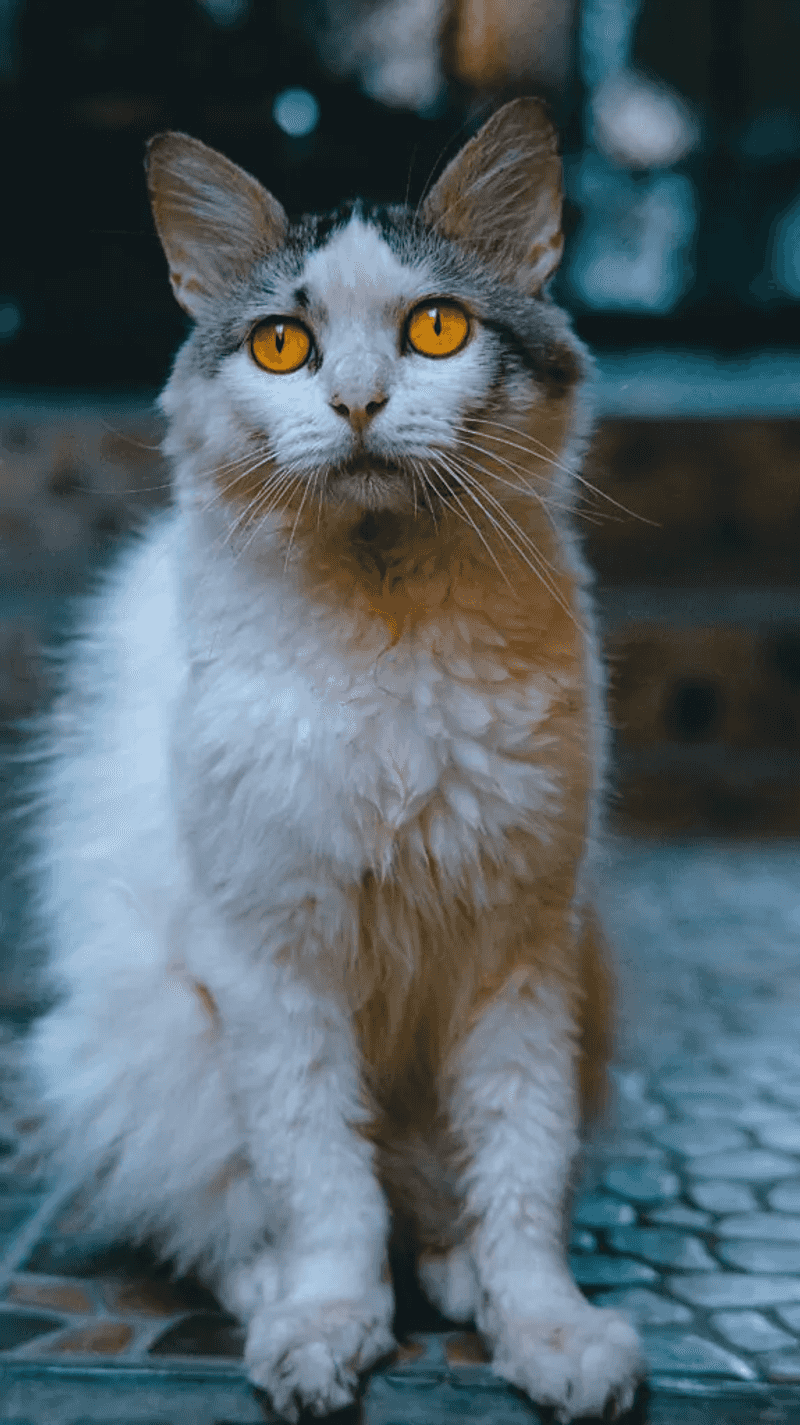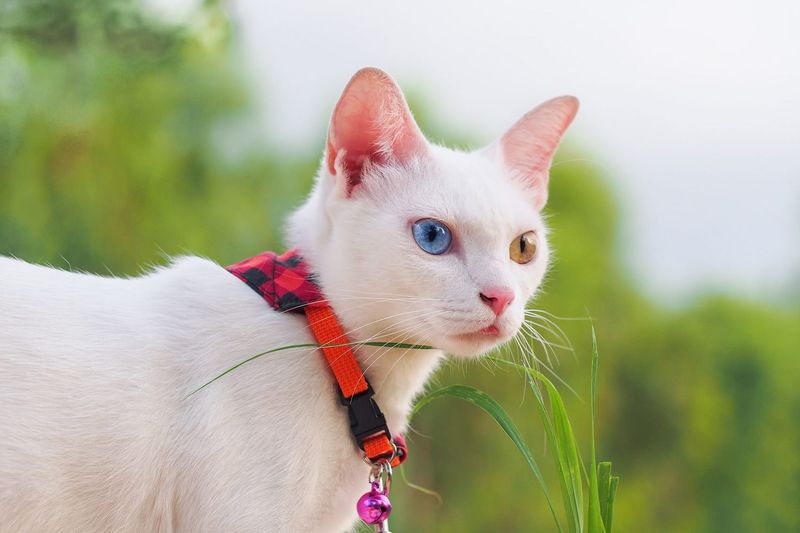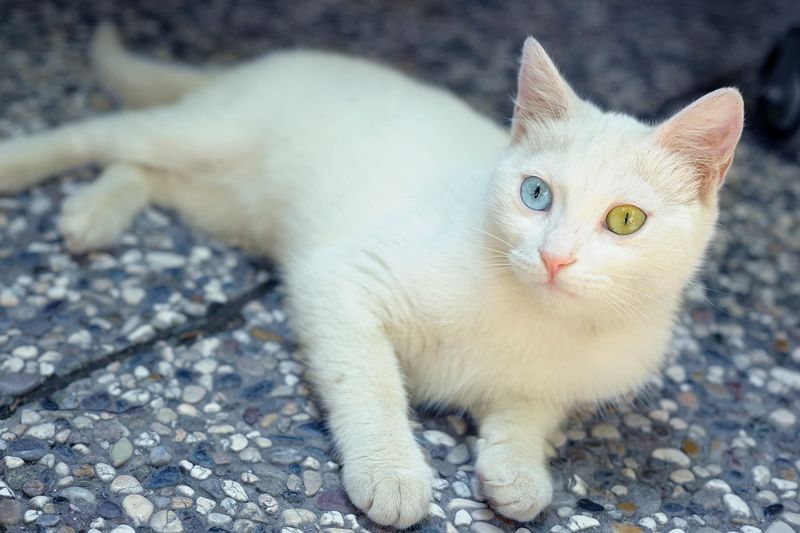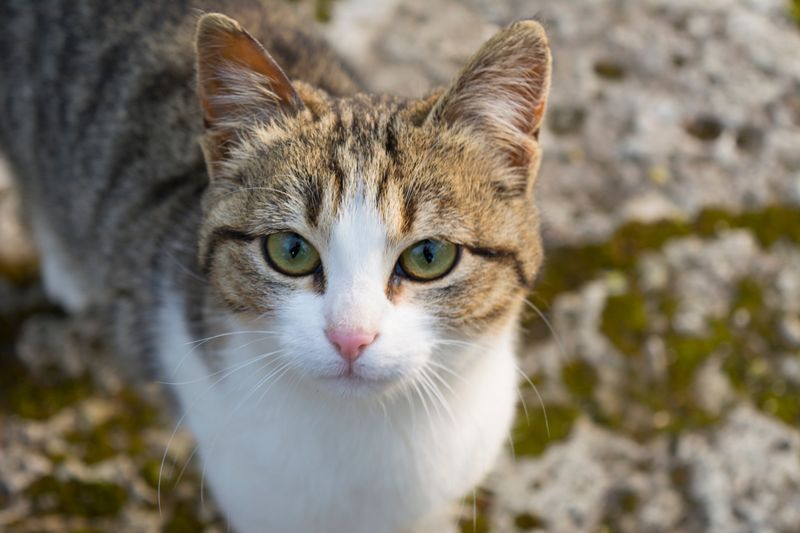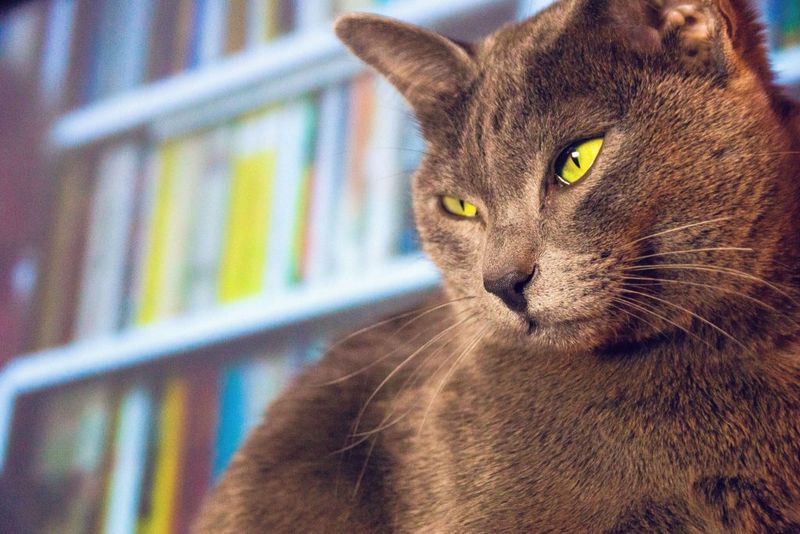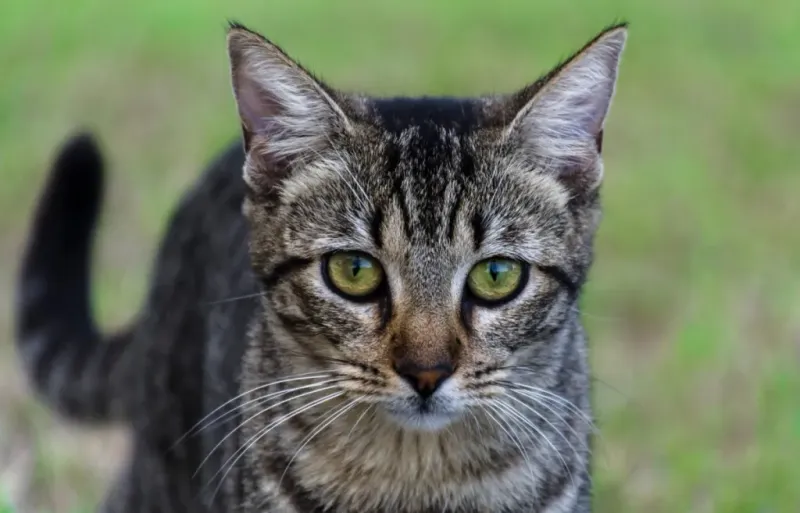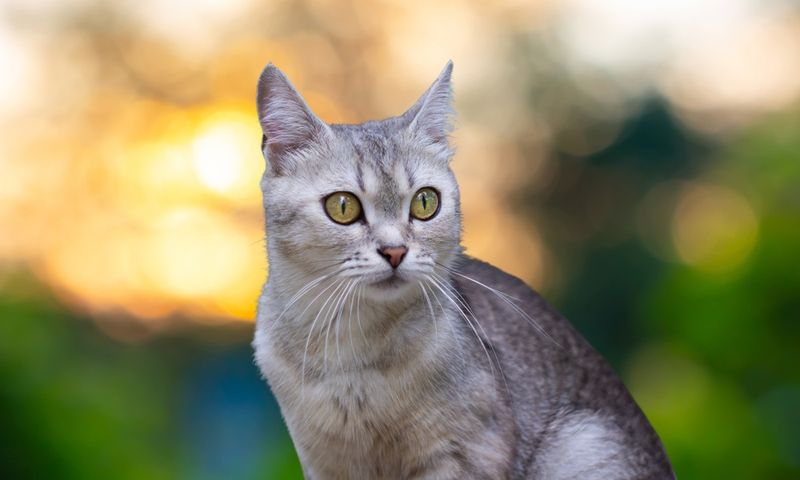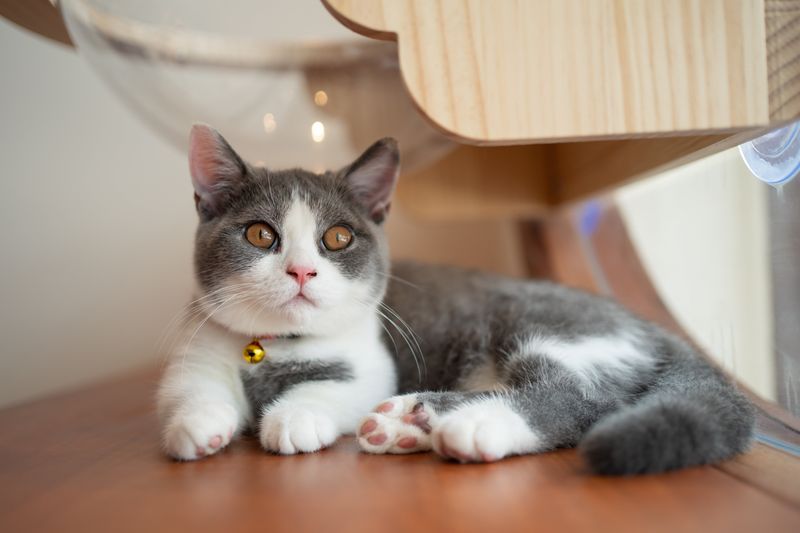📖 Table of Content:
The world of felines extends far beyond the common housecats we’re used to seeing. While most people are familiar with Siamese, Maine Coons, and Persians, there’s a whole universe of unusual cat breeds with fascinating features and personalities. These rare beauties might never cross your path at the local shelter or pet store, but they’re definitely worth knowing about. Let’s explore some of the most uncommon cat breeds that might surprise even dedicated cat lovers.
1. Peterbald
Originating from Russia in the 1990s, the Peterbald combines elegance with an unusual appearance. These cats often have little to no fur, giving them a warm, suede-like feel when touched.
Peterbalds are extremely affectionate and form strong bonds with their human families. They’re known for following their owners around the house and even greeting them at the door like dogs would.
Despite their hairless appearance, these cats require regular bathing since they lack fur to absorb natural skin oils. Their high metabolism means they eat more than the average cat and stay warm by cuddling with their humans.
2. Kurilian Bobtail
Native to Russia’s Kuril Islands, these natural athletes sport distinctive pom-pom tails that result from a genetic mutation. No two tails are exactly alike, making each Kurilian Bobtail truly one-of-a-kind.
Hardy and robust, these cats evolved in harsh island conditions, developing impressive hunting skills. They’re particularly adept at fishing and won’t hesitate to dip their paws into water to catch a meal.
Family-oriented and playful, Kurilians form strong bonds with their humans while maintaining an independent streak. Their thick double coat protects against cold weather and requires moderate grooming to prevent matting.
3. LaPerm
Born from a spontaneous genetic mutation on an Oregon farm in 1982, the LaPerm’s most striking feature is its curly, ringlet-like coat that resembles a permanent wave. The first LaPerm was actually born completely bald before developing its signature curls.
These cats have outgoing, inquisitive personalities and love to be where the action is. LaPerms typically seek high perches to observe household activities and will happily ride on their owner’s shoulder.
Their unique coat requires minimal maintenance despite its curly appearance. LaPerms shed less than many breeds, making them somewhat more tolerable for people with mild allergies.
4. Khao Manee
Known as the “White Gem” in Thailand, the Khao Manee has been treasured in its homeland for centuries but has only recently been recognized internationally. Thai royalty considered these pure white cats to bring good fortune.
Most fascinating are their jewel-like eyes, which can be blue, gold, or even odd-colored (one of each). Legend claims that cats with different colored eyes can see into both the human and spirit worlds simultaneously.
Active and vocal, Khao Manees love participating in household activities. They maintain kitten-like playfulness well into adulthood while developing deep bonds with their families. Their short white coat is surprisingly easy to maintain with weekly brushing.
5. Turkish Van
Nicknamed “the swimming cat,” the Turkish Van naturally loves water – a trait almost unheard of in the feline world. These cats originated around Turkey’s Lake Van region, where they would swim to cool off in the hot summer months.
Their distinctive coat pattern, primarily white with colored markings on the head and tail, is called the “van pattern.” Their semi-long fur has a unique texture similar to cashmere, lacking an undercoat which makes it water-resistant and quick to dry.
Turkish Vans develop slowly, not reaching full maturity until 3-5 years of age. Energetic and intelligent, they excel at learning tricks and solving problems, often figuring out how to open doors and cabinets.
6. American Wirehair
Sporting a unique coat that feels like steel wool, the American Wirehair emerged from a spontaneous mutation in a barn cat litter in upstate New York in 1966. Each hair is crimped, hooked, or bent, creating a springy, dense coat unlike any other cat breed.
Contrary to their unusual appearance, these cats have laid-back, easygoing personalities. They balance playfulness with a calm demeanor, making them adaptable to various household environments.
American Wirehairs are generally healthy with few breed-specific issues. Their distinctive coat requires minimal grooming – excessive brushing can actually damage the unique wire texture that makes these cats so special.
7. Korat
Considered lucky charms in their native Thailand, Korats have been cherished for over 600 years. Their distinctive blue-gray coat shimmers with each movement, creating a halo effect called “sea foam” that makes them appear to glow.
Korats have heart-shaped faces when viewed from the front, with large green eyes that take up to 4 years to develop their full emerald color. In Thailand, these cats were traditionally given in pairs to newlyweds to ensure good fortune.
Highly intelligent and trainable, Korats form deep bonds with their chosen people. They’re surprisingly heavy for their size due to their muscular build. Their short, single-layer coat requires minimal grooming, with just occasional brushing to remove loose hairs.
8. Sokoke
Found naturally in Kenya’s Arabuko Sokoke Forest, these rare felines were once thought to be hybrid descendants of wild cats. DNA testing proved them to be domestic cats that developed in isolation, creating their distinctive appearance.
Sokokes have modified tabby patterns that create a “wood grain” effect on their short, close-lying coats. Their slender, athletic bodies allow them to jump impressive heights with seemingly little effort.
Highly social and vocal, these cats form strong bonds with their families and will “talk” to communicate their needs and observations. Unlike many cats, Sokokes often enjoy being walked on a leash and will readily learn tricks when motivated with positive reinforcement.
9. Dragon Li
Ancient Chinese legends claim these cats descended from wild mountain cats that hunted dragons, giving them their fierce appearance and courageous spirit. Also known as Chinese Li Hua, these natural cats developed without human breeding intervention over thousands of years.
Dragon Lis feature distinctive brown mackerel tabby patterns with black tips on their ears and tails. Their muscular bodies and round faces give them a wild appearance despite their domestic status.
Excellent hunters by nature, these cats maintain strong prey drives even as pets. They’re intelligent problem-solvers who form loyal bonds with their families while maintaining independent personalities. In China, they’re celebrated for their ability to catch rats and protect grain stores.
10. Burmilla
Born from an accidental mating between a Chinchilla Persian and a Burmese in the UK in 1981, the Burmilla combines the best of both parent breeds. Their shimmering coats come in two lengths – short and medium – with a distinctive “tipped” pattern that gives them a sparkling appearance.
Burmillas maintain kitten-like playfulness throughout their lives. They’re curious explorers who investigate every corner of their homes, yet they balance this energy with affectionate, lap-cat tendencies.
These cats speak in soft, chirping voices rather than loud meows. Their gentle temperaments make them excellent companions for children and other pets. Despite their luxurious appearance, their coats require relatively minimal maintenance with weekly brushing.
11. Minskin
Developed in Boston in 1998, the Minskin combines the hairlessness of the Sphynx with the short legs of the Munchkin. These cats aren’t completely hairless – they have fur points on their extremities similar to a Siamese color pattern, creating a unique “fur-pointed” appearance.
Standing only 7-8 inches tall, Minskins move with surprising agility despite their short legs. They compensate for their stature with remarkable jumping ability and cat-like reflexes.
Friendly and outgoing, these cats thrive on human interaction and get along well with other pets. Their partially furless bodies feel like warm cashmere to the touch. Minskins need regular bathing to remove body oils that would normally be absorbed by fur in other cats.
